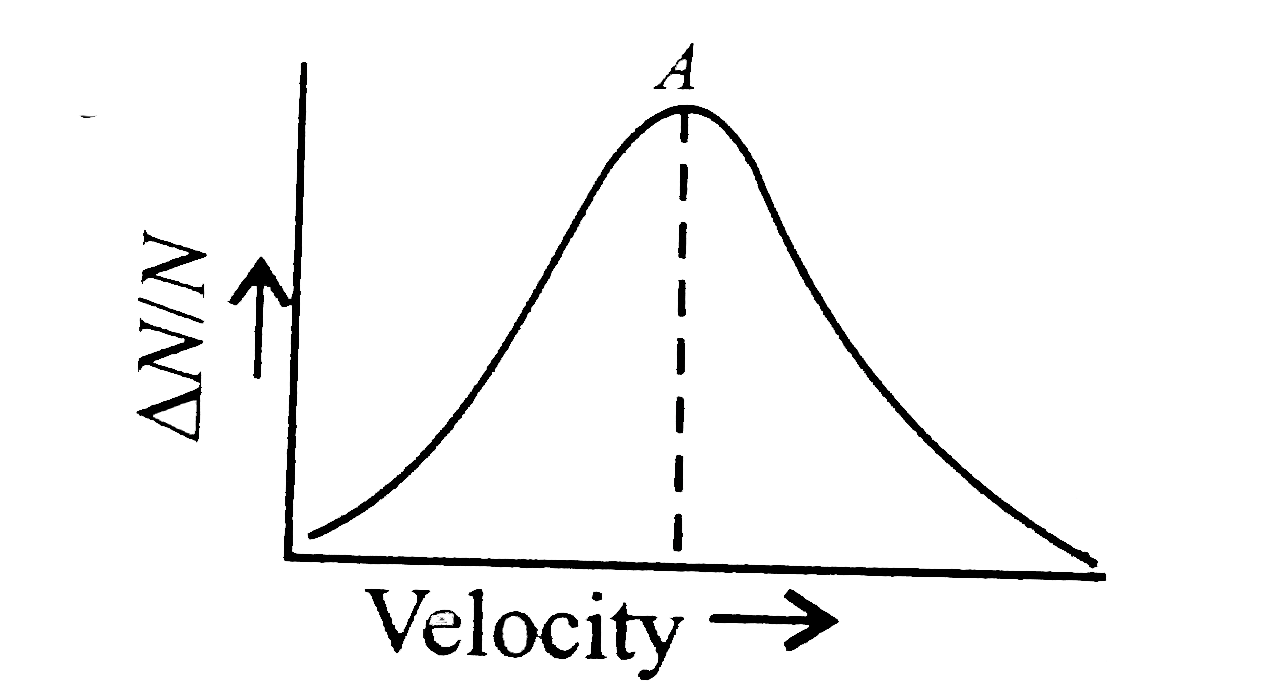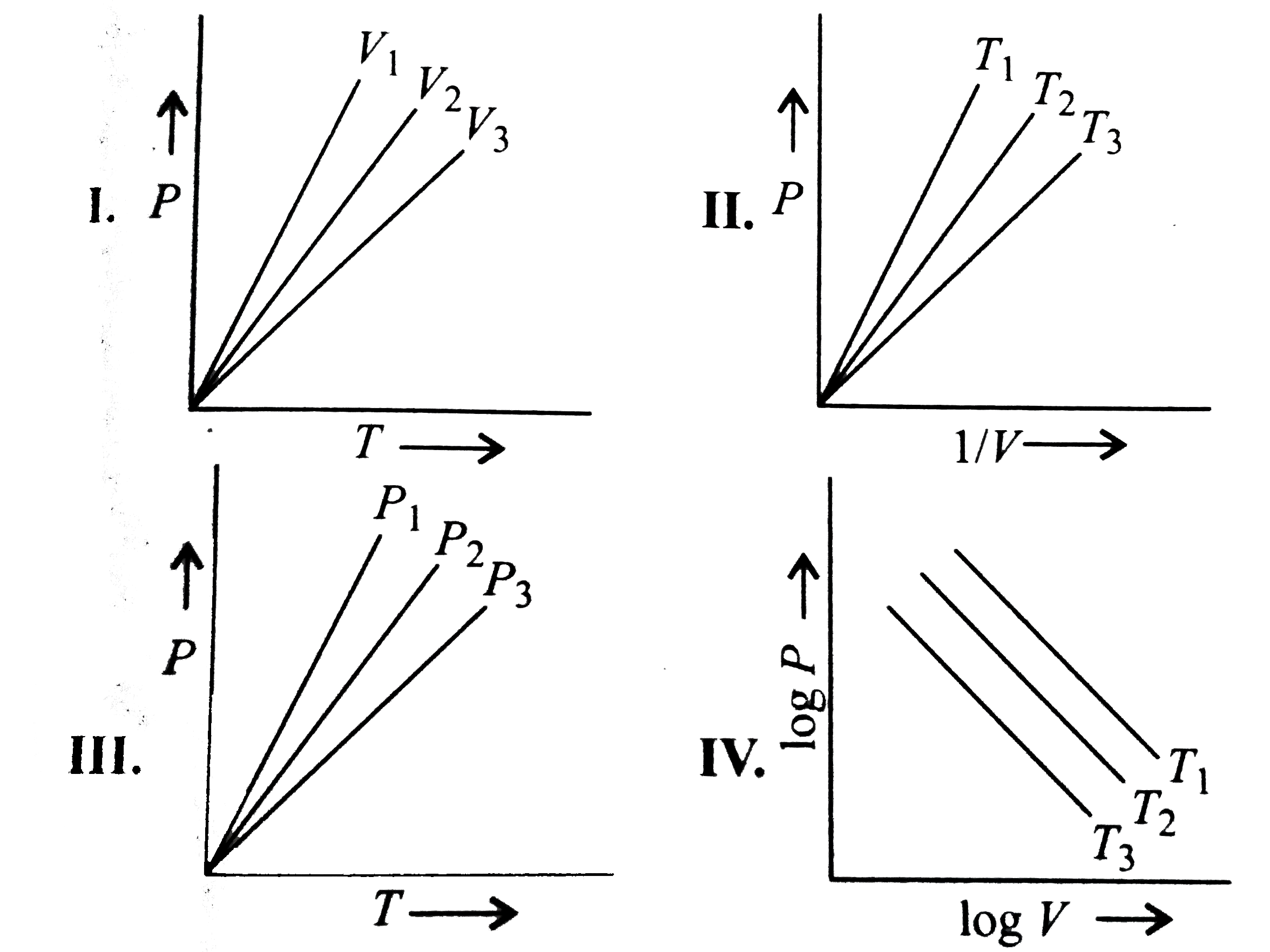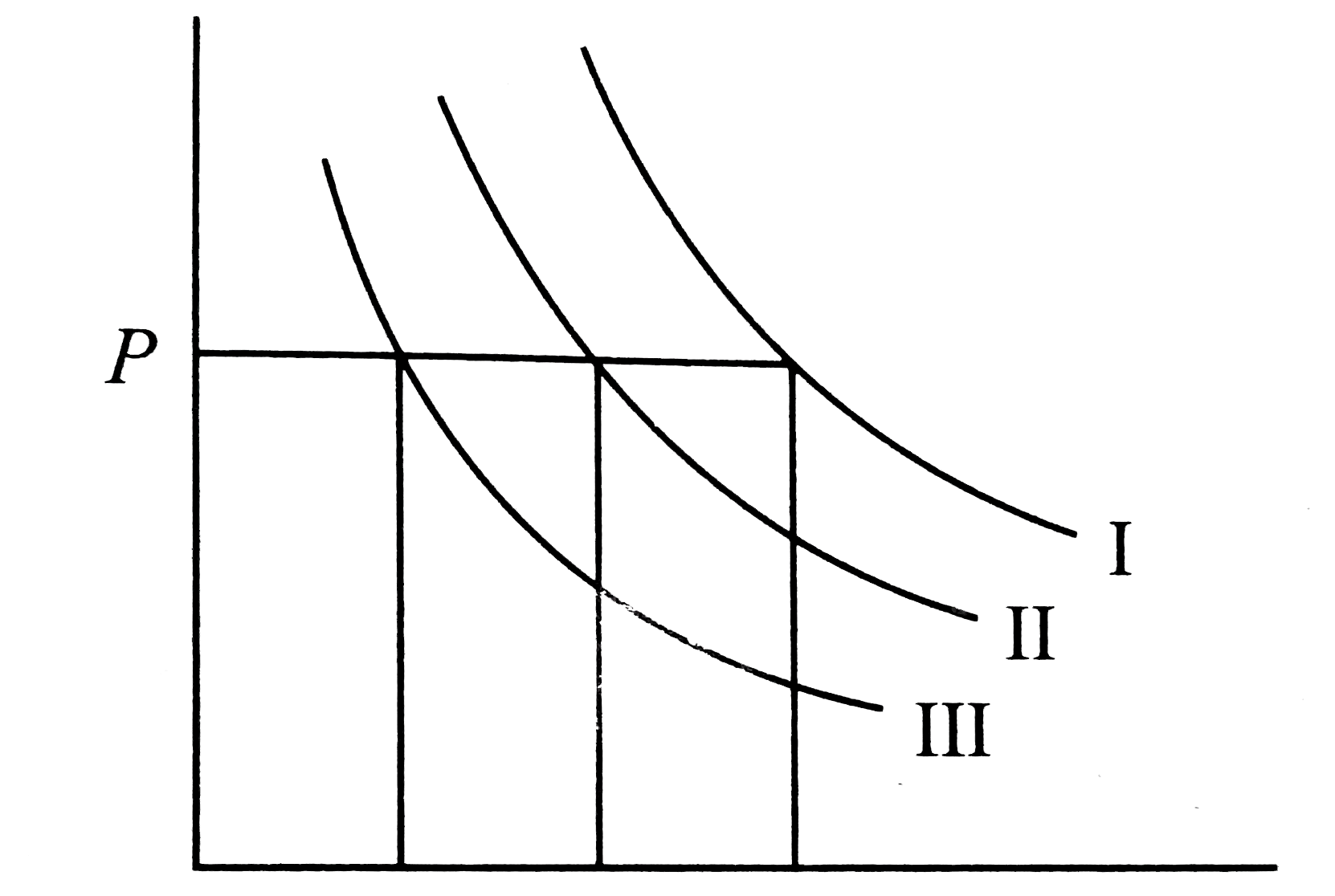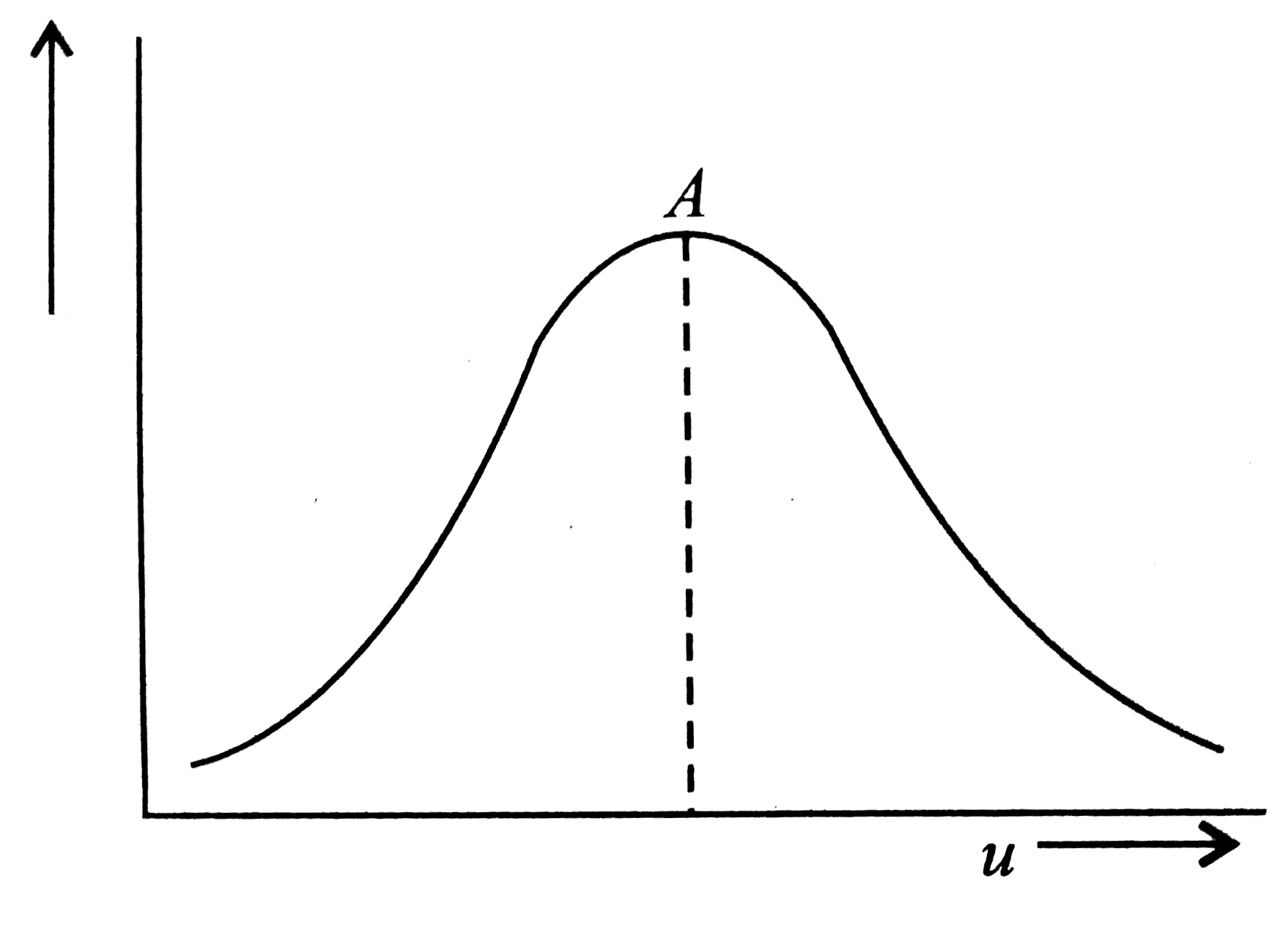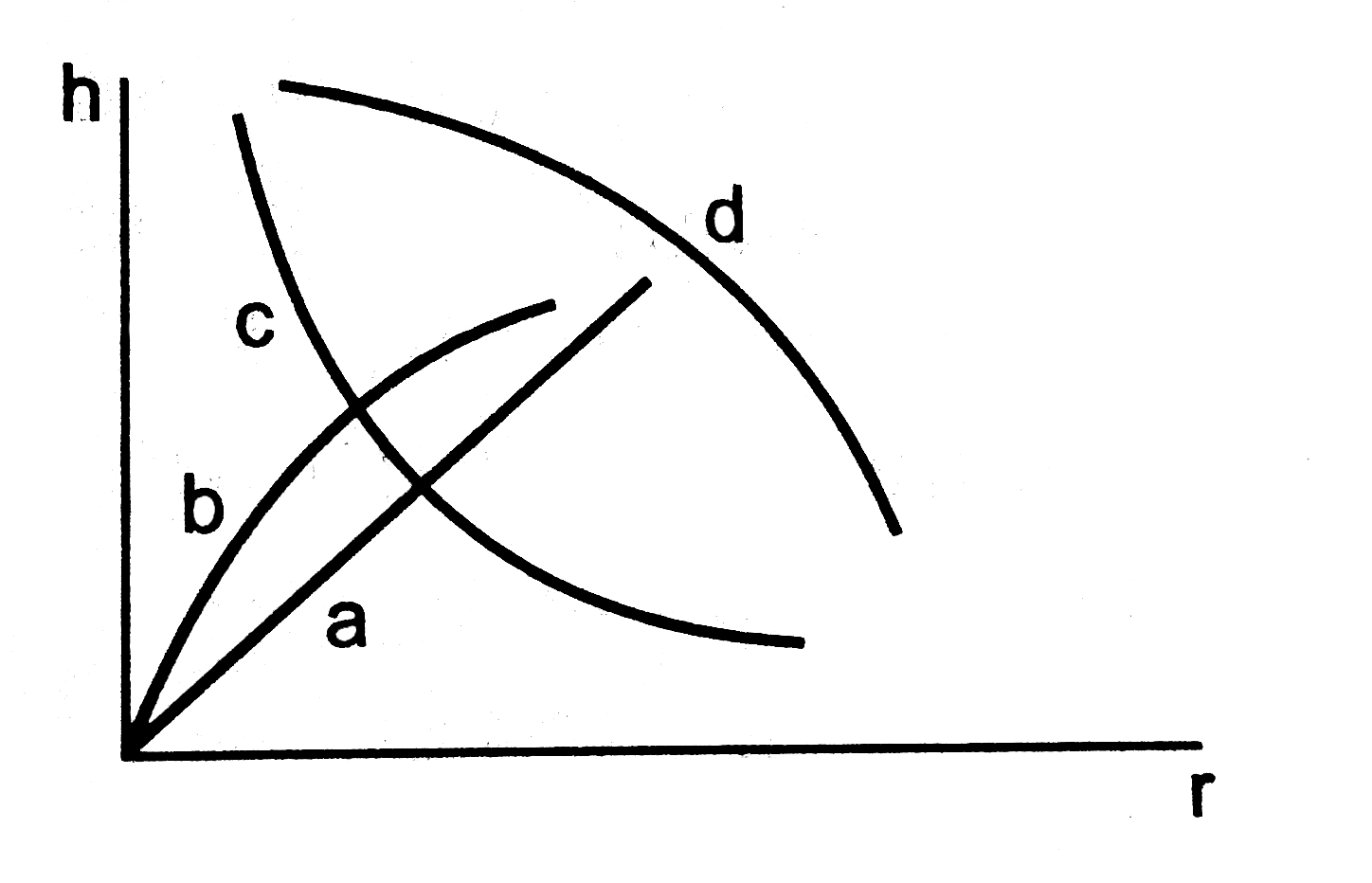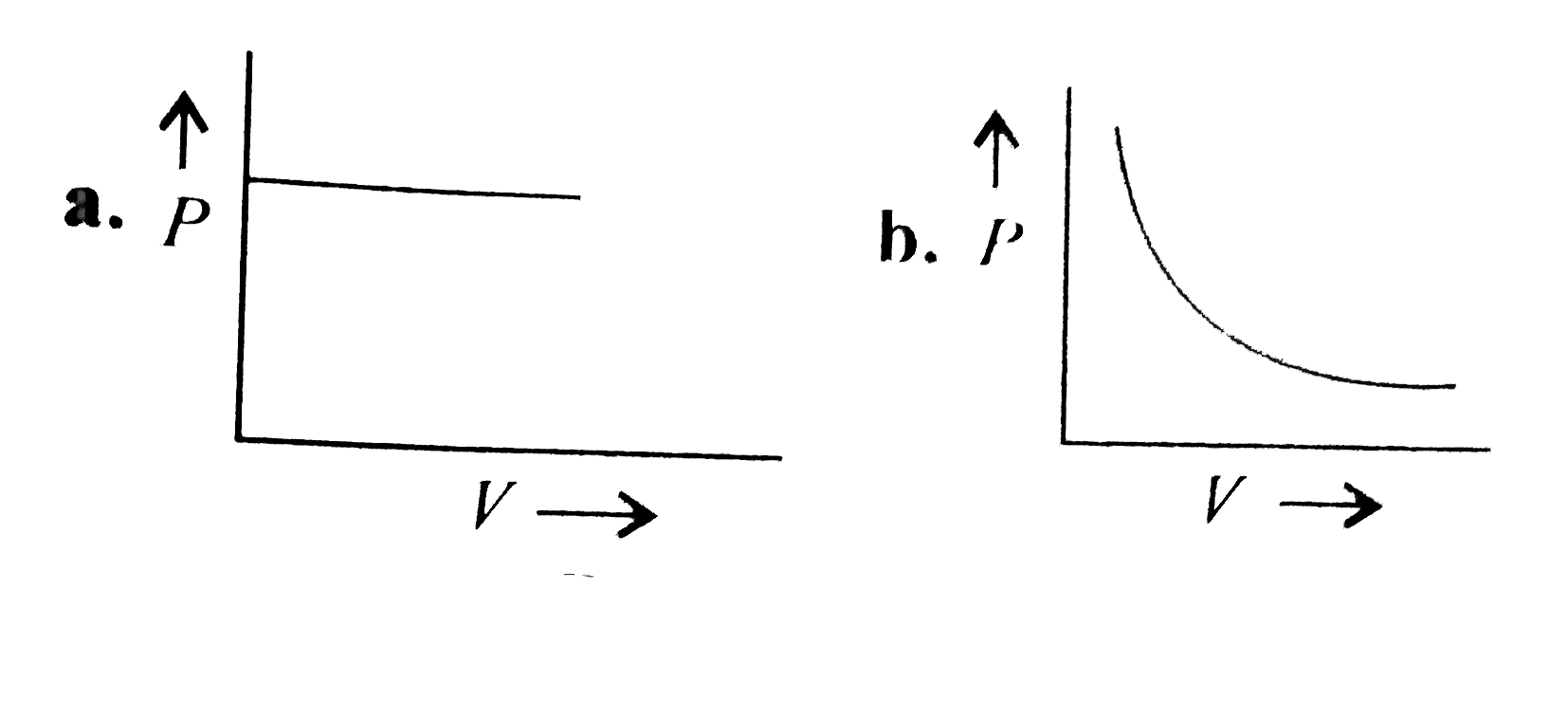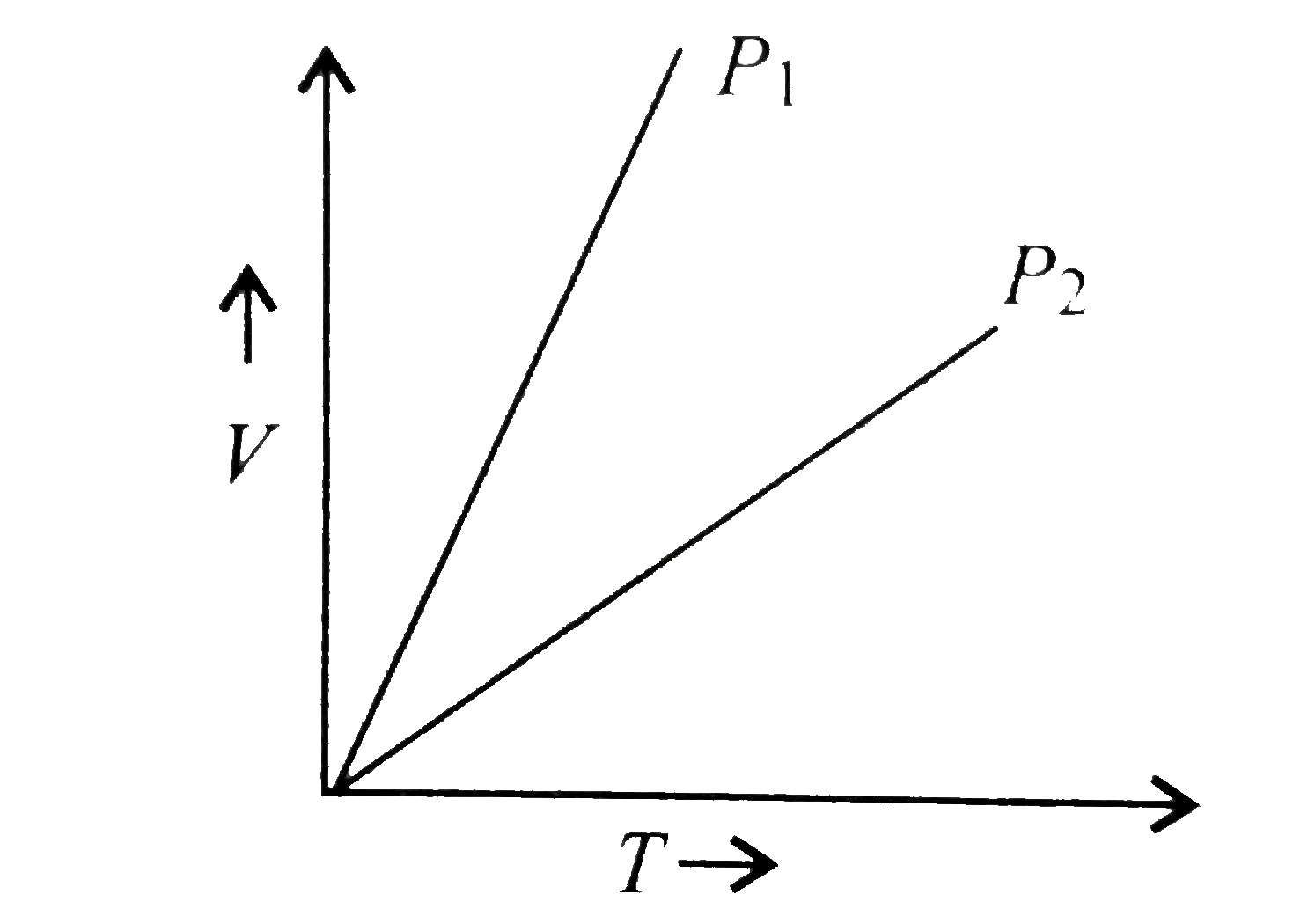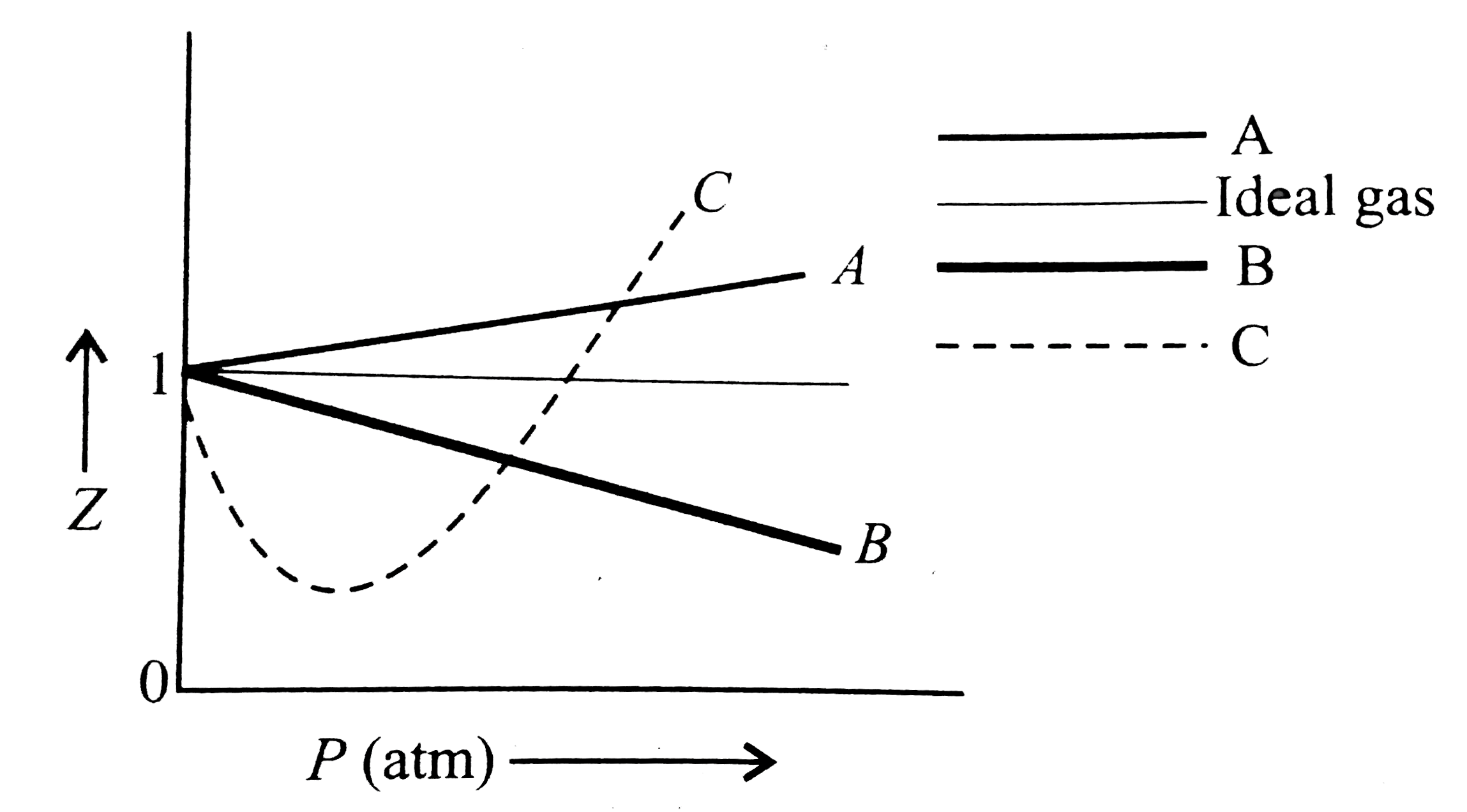Ex 5.4 from CENGAGE CHEMISTRY (ENGLISH) STATES OF MATTER for Class 11
| Class 11 | CHEMISTRY |
| Chapter | STATES OF MATTER |
| CENGAGE CHEMISTRY (ENGLISH) | Ex 5.4 |
| Medium | English |
| Academic Year | 2023-2024 |
Question 16
When 2g of a gas A is introduced into an evacuated flask kept at 25∘C, the pressure is found to be one atmosphere. If 3 g of another gas B are then added to the same flask, the total pressure becomes 1.5 atm. Assuming ideal gas behaviour, calculate the ratio of molecular weights MA:MB.View SolutionQuestion 22
The figure given below shows three glass chambers that are connected by valves of negligible volume. At the outset of an experiment, the valves are closed and the chambers contain the gases as detailed in the diagram. All the chambers are at the temperature of 300K and external pressure of 1.0atm.
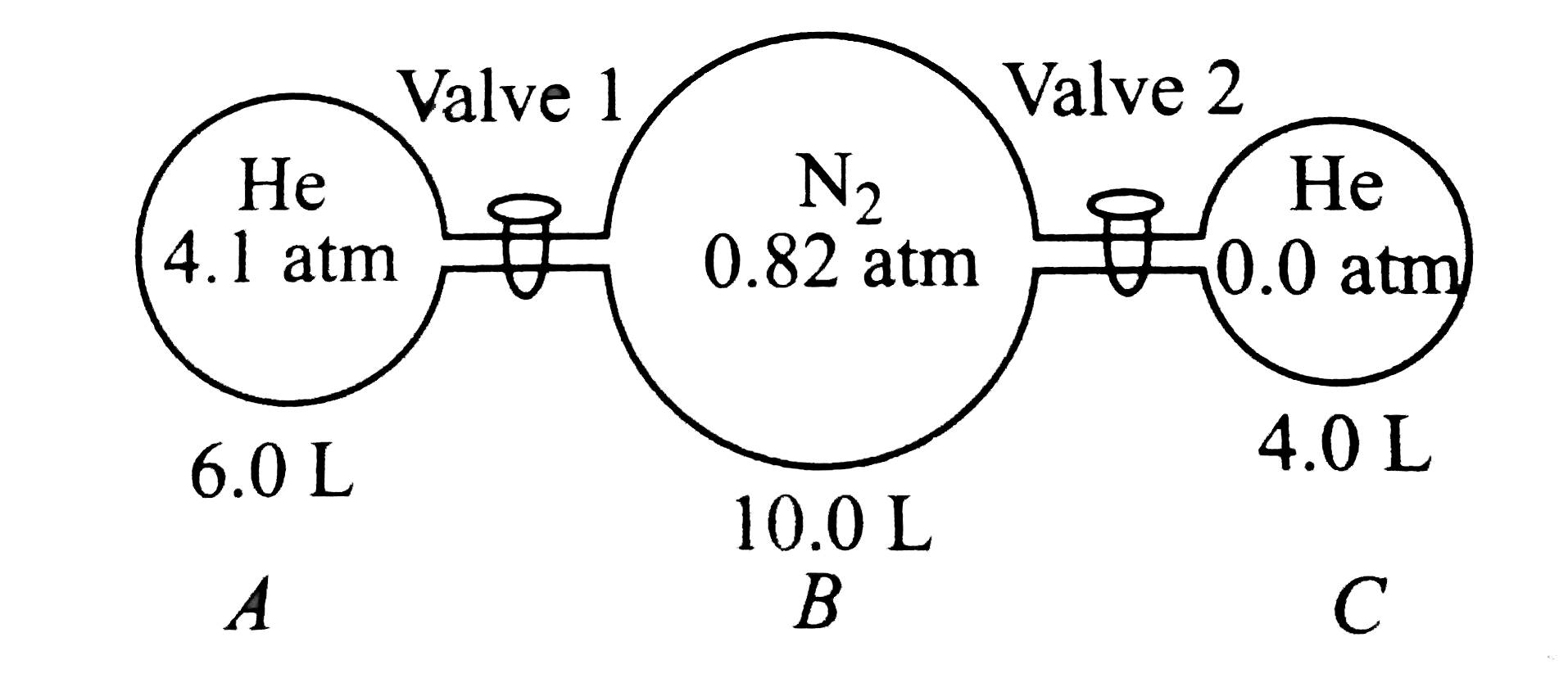
What is the total pressure in chamber B after valve 1 is opened?View SolutionQuestion 23
The figure given below shows three glass chambers that are connected by valves of negligible volume. At the outset of an experiment, the valves are closed and the chambers contain the gases as detailed in the diagram. All the chambers are at the temperature of 300K and external pressure of 1.0atm.
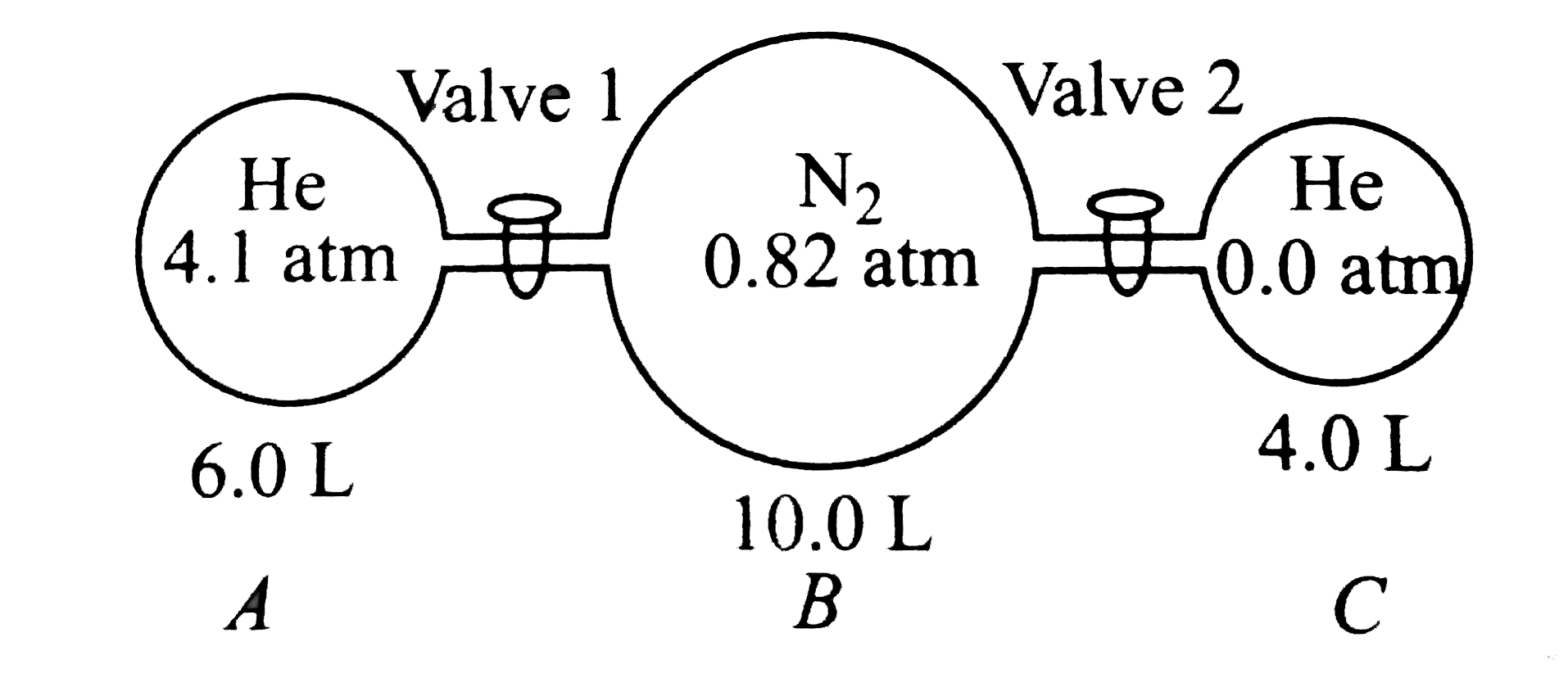
Which of the following represents the total kinetic energy of all the gas molecules after both valves are opened?
(R=0.082atmLK−1mol−1=8.314JK_1mol−1)View SolutionQuestion 24
The figure given below shows three glass chambers that are connected by valves of negligible volume. At the outset of an experiment, the valves are closed and the chambers contain the gases as detailed in the diagram. All the chambers are at the temperature of 300K and external pressure of 1.0atm.

What is the total pressure in chamber B after valve 1 is opened?View SolutionQuestion 25
The figure given below shows three glass chambers that are connected by valves of negligible volume. At the outset of an experiment, the valves are closed and the chambers contain the gases as detailed in the diagram. All the chambers are at the temperature of 300K and external pressure of 1.0atm.

What is the total pressure in chamber B after valve 1 is opened?View SolutionQuestion 26
The distribution of the molecular velocities of gas molecules at any temperature T is shown below. (The plot below is known as Maxwell's distribution of molecular speeds.)
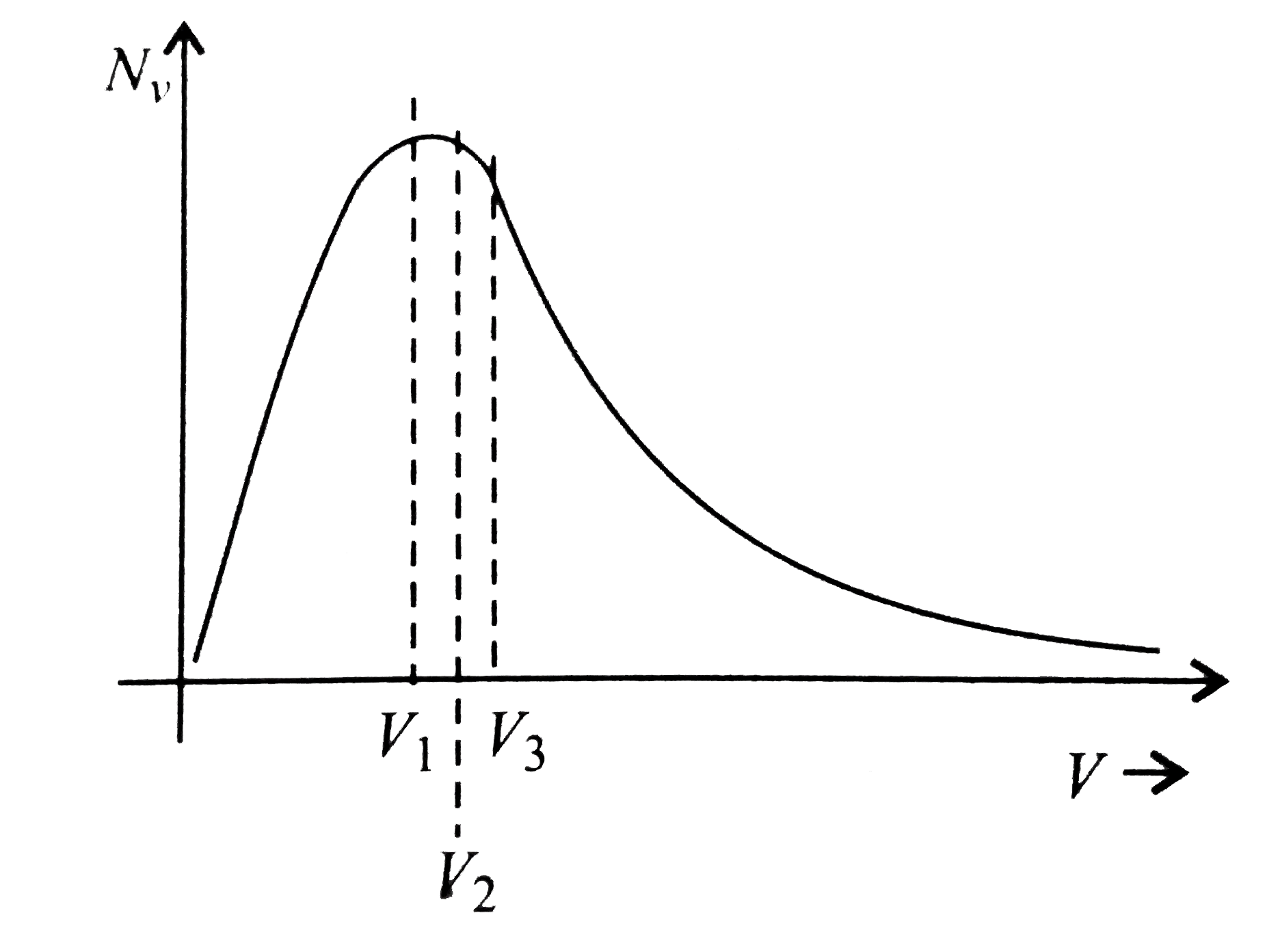
where
v is molecular velocity
n is number of molecules having velocity v
Let us define ΔNv, which is equal to the number of molecules between the velocity range v and v+Δv, given by
ΔNv=4πNa3e−bv2v2Δv
where
N is total number of molecules
a=√M02πRT and b=M02RT
R is universal gas constant
T is temperature of the gas
M0 is molecular weight of the gas
Answer the following question:
SI units of a areView SolutionQuestion 27
The distribution of the molecular velocities of gas molecules at any temperature T is shown below. (The plot below is known as Maxwell's distribution of molecular speeds.)
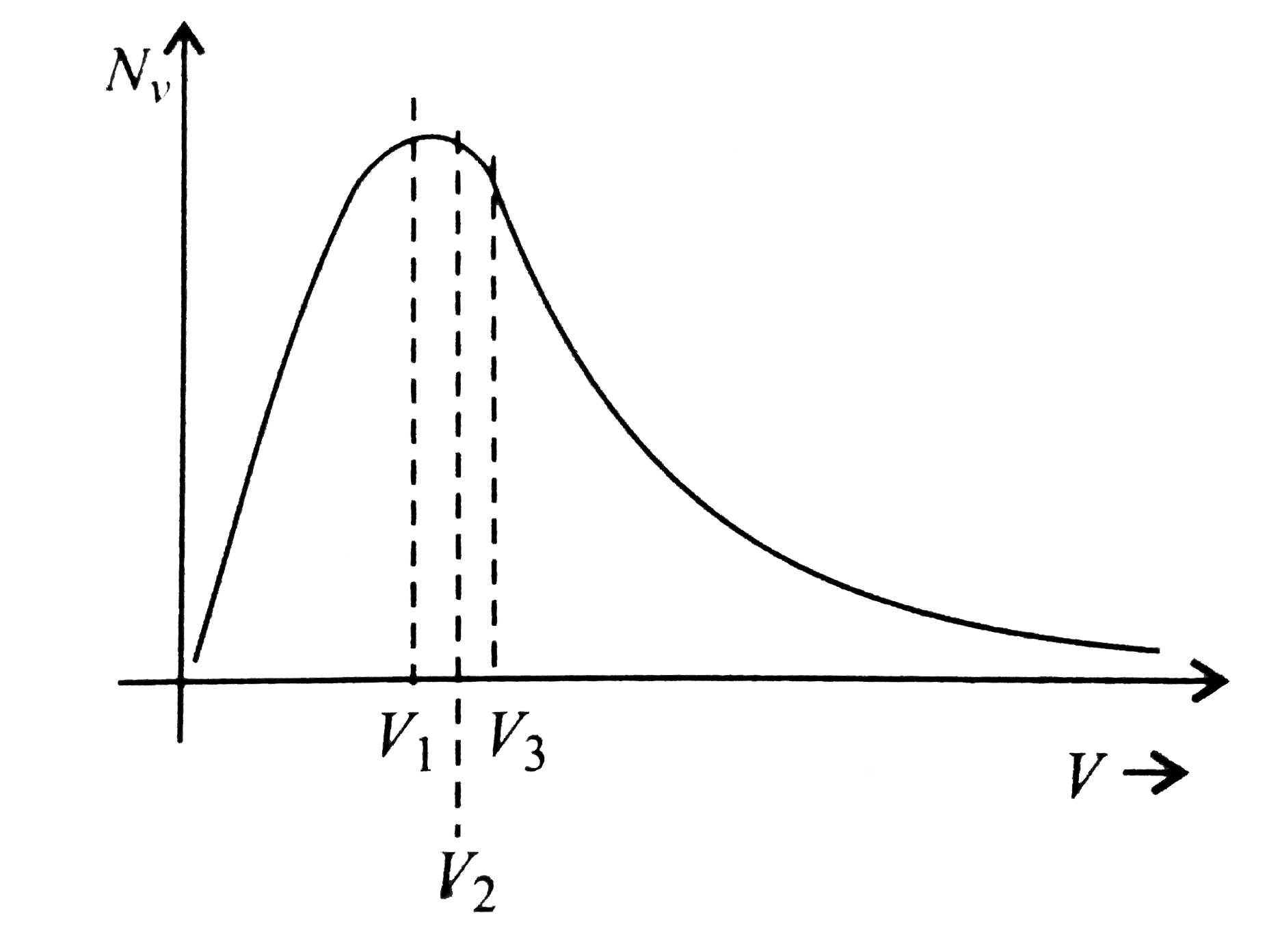
where
v is molecular velocity
n is number of molecules having velocity v
Let us define ΔNv, which is equal to the number of molecules between the velocity range v and v+Δv, given by
ΔNv=4πNa3e−bv2v2Δv
where
N is total number of molecules
a=√M02πRT and b=M02RT
R is universal gas constant
T is temperature of the gas
M0 is molecular weight of the gas
Answer the following question:
SI units of b areView SolutionQuestion 28
The distribution of the molecular velocities of gas molecules at any temperature T is shown below. (The plot below is known as Maxwell's distribution of molecular speeds.)

where
v is molecular velocity
n is number of molecules having velocity v
Let us define ΔNv, which is equal to the number of molecules between the velocity range v and v+Δv, given by
ΔNv=4πNa3e−bv2v2Δv
where
N is total number of molecules
a=√M02πRT and b=M02RT
R is universal gas constant
T is temperature of the gas
M0 is molecular weight of the gas
Answer the following question:
SI units of a areView SolutionQuestion 29
The distribution of the molecular velocities of gas molecules at any temperature T is shown below. (The plot below is known as Maxwell's distribution of molecular speeds.)

where
v is molecular velocity
n is number of molecules having velocity v
Let us define ΔNv, which is equal to the number of molecules between the velocity range v and v+Δv, given by
ΔNv=4πNa3e−bv2v2Δv
where
N is total number of molecules
a=√M02πRT and b=M02RT
R is universal gas constant
T is temperature of the gas
M0 is molecular weight of the gas
Answer the following question:
SI units of a areView SolutionQuestion 53
Two gaseous molecules A and B are traveling towards each other. Let the mean free path of the molecule be σ and Z be the collision number with other molecules at pressure 1atm. Answer the following questions
If the mean free path is σ at 1atm pressure, then its value at 5atm pressure isView SolutionQuestion 54
Two gaseous molecules A and B are traveling towards each other. Let the mean free path of the molecule be σ and Z be the collision number with other molecules at pressure 1atm. Answer the following questions
If Z is the total number of collisions which a gas molecule registers with others per unit time under particular conditions, then the collision frequency of the gas containing N molecules per unit volume isView SolutionQuestion 55
Two gaseous molecules A and B are traveling towards each other. Let the mean free path of the molecule be σ and Z be the collision number with other molecules at pressure 1atm. Answer the following questions
If the collision frequency of a gas at 1atm pressure is Z, then its collision frequency at 0.5atm isView SolutionQuestion 56
The constant motion and high velocities of gas particles lead to some important practical consquences. One such consquences is that gases mix rapidly when they come in contact. Take the stopper off a bottle of perfume, for instance, and the odour will spread rapidly through the room as perfume molecules mix with the molecules in the air. This mixing of different gases by random molecular motion and with frequent collision is called diffusion. A similar process in which gas molecules escape without collision through a tiny hole into a vacuum is called effusion. Both the processes follow Graham's law which is mathematically put as r∝√1/d. The average distance travelled by molecules between successive collisions is called mean free path.
Answer the following questions on the basis of the above information:
The stop cocks of the bulbs X (containing NH3) and Y (containing HCl), both under indentical conditions, are opened simultaneously. White fumes of NH4Cl, are formed at point B. If AB=36.5cm, then BC is approximately
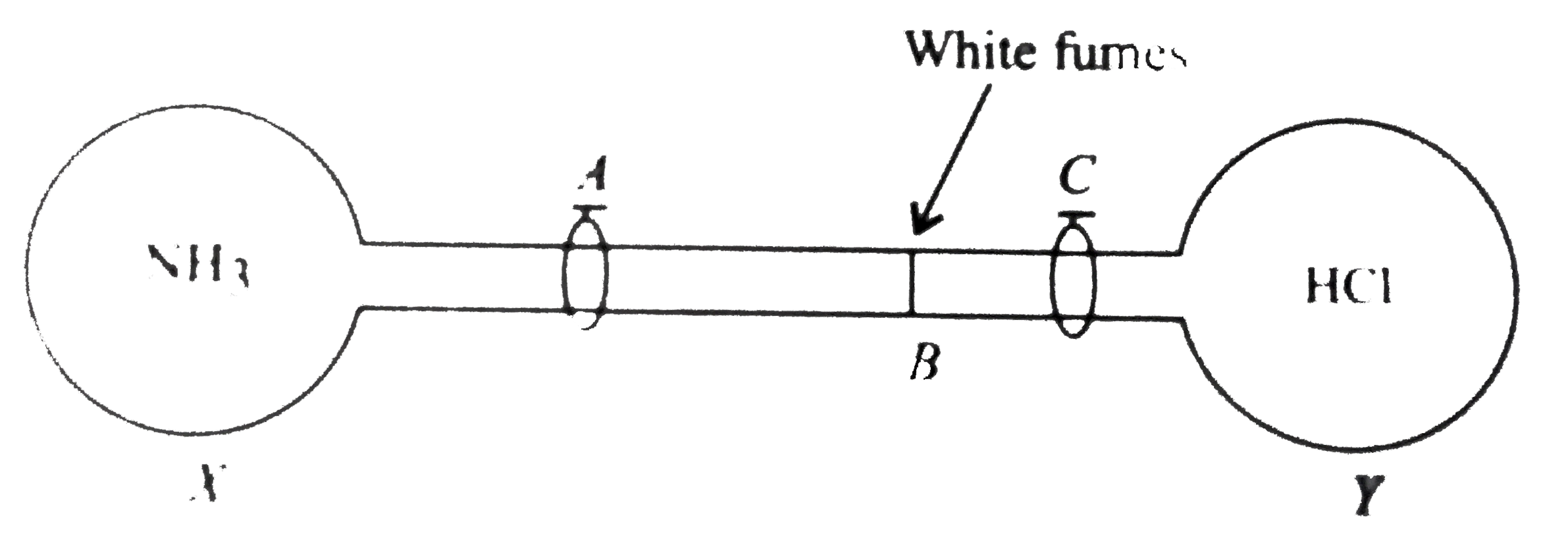 View Solution
View SolutionQuestion 57
The constant motion and high velocities of gas particles lead to some important practical consquences. One such consquences is that gases mix rapidly when they come in contact. Take the stopper off a bottle of perfume, for instance, and the odour will spread rapidly through the room as perfume molecules mix with the molecules in the air. This mixing of different gases by random molecular motion and with frequent collision is called diffusion. A similar process in which gas molecules escape without collision through a tiny hole into a vacuum is called effusion. Both the processes follow Graham's law which is mathematically put as r∝√1/d. The average distance travelled by molecules between successive collisions is called mean free path.
Answer the following questions on the basis of the above information:
Select the correct statement(s).View SolutionQuestion 58
The constant motion and high velocities of gas particles lead to some important practical consquences. One such consquences is that gases mix rapidly when they come in contact. Take the stopper off a bottle of perfume, for instance, and the odour will spread rapidly through the room as perfume molecules mix with the molecules in the air. This mixing of different gases by random molecular motion and with frequent collision is called diffusion. A similar process in which gas molecules escape without collision through a tiny hole into a vacuum is called effusion. Both the processes follow Graham's law which is mathematically put as r∝√1/d. The average distance travelled by molecules between successive collisions is called mean free path.
Answer the following questions on the basis of the above information:
Select the correct statement(s).View SolutionQuestion 60
The constant motion and high velocities of gas particles lead to some important practical consquences. One such consquences is that gases mix rapidly when they come in contact. Take the stopper off a bottle of perfume, for instance, and the odour will spread rapidly through the room as perfume molecules mix with the molecules in the air. This mixing of different gases by random molecular motion and with frequent collision is called diffusion. A similar process in which gas molecules escape without collision through a tiny hole into a vacuum is called effusion. Both the processes follow Graham's law which is mathematically put as r∝√1/d. The average distance travelled by molecules between successive collisions is called mean free path.
Answer the following questions on the basis of the above information:
Select the correct statement(s).View SolutionQuestion 61
The behaviour of ideal gas is goverened by various gas laws which are described by mathematical statements as given below:
(i) PV=k (constant) at constant n and T
(ii) V/T=k2 (constant) at constant n and P
(iii) V/n=k3 (constant) at constant T and P
(iv) PV=nRT
(v) P/T=k4(constant)atconstantnandV<br>Answerthefollow∈g<br>Thevalueofk_(2) isView SolutionQuestion 62
The behaviour of ideal gas is goverened by various gas laws which are described by mathematical statements as given below:
(i) PV=k (constant) at constant n and T
(ii) V/T=k2 (constant) at constant n and P
(iii) V/n=k3 (constant) at constant T and P
(iv) PV=nRT
(v) P/T=k4(constant)atconstantnandV
Answer the following
Avogadro's law is represented by the expressionView SolutionQuestion 63
The behaviour of ideal gas is goverened by various gas laws which are described by mathematical statements as given below:
(i) PV=k (constant) at constant n and T
(ii) V/T=k2 (constant) at constant n and P
(iii) V/n=k3 (constant) at constant T and P
(iv) PV=nRT
(v) P/T=k4 (constant) at constant n and V
Answer the following
A cylinder of 10L capacity at 300K containing the gas is used to fill balloons till finally the cylinder recorded a pressure of 10m bar. The number of He atoms still present in the cylinder isView SolutionQuestion 64
The behaviour of ideal gas is goverened by various gas laws which are described by mathematical statements as given below:
(i) PV=k (constant) at constant n and T
(ii) V/T=k2 (constant) at constant n and P
(iii) V/n=k3 (constant) at constant T and P
(iv) PV=nRT
(v) P/T=k4 (constant) at constant n and V
Answer the following
The expression (ii) representsView SolutionQuestion 65
The behaviour of ideal gas is goverened by various gas laws which are described by mathematical statements as given below:
(i) PV=k (constant) at constant n and T
(ii) V/T=k2 (constant) at constant n and P
(iii) V/n=k3 (constant) at constant T and P
(iv) PV=nRT
(v) P/T=k4 (constant) at constant n and V
Answer the following
If we plot a graph between volume (L) and temperature (−273.15∘C) by studying their variation for 2.0g of certain ideal gas at 1¯ pressure, the graph obtained is a straight line which isView SolutionQuestion 66
Consider the adjacent diagram. Initially, flask A contained oxygen gas at 27∘C and 950mm of Hg, and flask B contained neon gas at 27∘C and 900mm. Finally, two flask were joined by means of a narrow tube of negligible volume equipped with a stopcock and gases were allowed to mixup freely. The final pressure in the combined system was found to be 910mm of Hg.

Which of the following statements concerning oxygen and neon gas is true in the begining, when the stopcock was just opened?View SolutionQuestion 67
Consider the adjacent diagram. Initially, flask A contained oxygen gas at 27∘C and 950mm of Hg, and flask B contained neon gas at 27∘C and 900mm. Finally, two flask were joined by means of a narrow tube of negligible volume equipped with a stopcock and gases were allowed to mixup freely. The final pressure in the combined system was found to be 910mm of Hg.

What is the correct relationship between volumes of the two flasks?View SolutionQuestion 68
Consider the adjacent diagram. Initially, flask A contained oxygen gas at 27∘C and 950mm of Hg, and flask B contained neon gas at 27∘C and 900mm. Finally, two flask were joined by means of a narrow tube of negligible volume equipped with a stopcock and gases were allowed to mixup freely. The final pressure in the combined system was found to be 910mm of Hg.

If flask B were heated to 127∘C, maintaining flask A at constant temperature of 27∘C, final pressure (in mmHg) in the combined system would have beenView SolutionQuestion 69
The system shown in the figure is in equilibrium, where A and B are isomeric liquids and form an ideal solution at TK. Standard vapour pressures of A and B are P0A and P0B, respectively, at TK. We collect the vapour of A and B in two containers of volume V, first container is maintained at 2TK and second container is maintained at 3T/2. At the temperature greater than TK, both A and B exist in only gaseous form.
We assume than collected gases behave ideally at 2TK and there may take place an isomerisation reaction in which A gets converted into B by first-order kinetics reaction given as:
Ak−−→B, where k is a rate constant.
In container (II) at the given temperature 3T/2, A and B are ideal in nature and non reacting in nature. A small pin hole is made into container. We can determine the initial rate of effusion of both gases in vacuum by the expression

r=K.P√M0
where P= pressure differences between system and surrounding
K= positive constant
M0= molecular weight of the gas
If partial vapour pressure of A is twice that of partial vapour pressure of B and total vapour pressure 2 atm at TK, where T=50K and V=8.21L, then the number of moles of A and B in vapour phase is:View SolutionQuestion 70
The system shown in the figure is in equilibrium, where A and B are isomeric liquids and form an ideal solution at TK. Standard vapour pressures of A and B are P0A and P0B, respectively, at TK. We collect the vapour of A and B in two containers of volume V, first container is maintained at 2TK and second container is maintained at 3T/2. At the temperature greater than TK, both A and B exist in only gaseous form.
We assume than collected gases behave ideally at 2TK and there may take place an isomerisation reaction in which A gets converted into B by first-order kinetics reaction given as:
Ak−−→B, where k is a rate constant.
In container (II) at the given temperature 3T/2, A and B are ideal in nature and non reacting in nature. A small pin hole is made into container. We can determine the initial rate of effusion of both gases in vacuum by the expression

r=K.P√M0
where P= pressure differences between system and surrounding
K= positive constant
M0= molecular weight of the gas
Vapours of A and B are passed into a container of volume 8.21L, maintained at 2TK, where T=50K and after 5min, moles of B=8/3. The pressure developed into the cotainer after two half lives isView SolutionQuestion 71
The system shown in the figure is in equilibrium, where A and B are isomeric liquids and form an ideal solution at TK. Standard vapour pressures of A and B are P0A and P0B, respectively, at TK. We collect the vapour of A and B in two containers of volume V, first container is maintained at 2TK and second container is maintained at 3T/2. At the temperature greater than TK, both A and B exist in only gaseous form.
We assume than collected gases behave ideally at 2TK and there may take place an isomerisation reaction in which A gets converted into B by first-order kinetics reaction given as:
Ak−−→B, where k is a rate constant.
In container (II) at the given temperature 3T/2, A and B are ideal in nature and non reacting in nature. A small pin hole is made into container. We can determine the initial rate of effusion of both gases in vacuum by the expression

r=K.P√M0
where P= pressure differences between system and surrounding
K= positive constant
M0= molecular weight of the gas
If vapours are collected in a container of volume 8.21L maintained at 3T/2K, where T=50K, then the ratio of initial rate of effusion of gases A and B is given asView SolutionQuestion 116
A mixture of SO2 and O2 in the molar ratio 16:1 is diffused through a pin hole for successive effusion three times to give a molar ratio 1:1 of diffused mixture. Which one are not correct if diffusion is made at same P and T in each operation?
(I) Eight operation are needed to get 1:1 molar ratio.
(II) Rate of diffusion for SO2:O3 after eight operations in 0.707.
(III) Six operations are needed to get 2:1 molar ratio for SO2 and O2 in diffusion mixture.
(IV) Rate of diffusion for SO2 and O2 after six operations is 2.41.View SolutionQuestion 117
A graph is plotted between logV and logT for 2mol of gas at constant pressure of 0.0821atm. V and T are in litre and K. Which of the following statements are not correct?
(I) The curve is straight line with slope −1.
(II) The curve is straight line with slope +1.
(III) The intercepet on Y−axis is equal to 2.
(IV) The intercepet on Y−axis is equal to 0.3010.View SolutionQuestion 122
Select the correct statements.
(I) Greater is humidity, lesser will be rate of evaporation of water.
(II) Greater is humidity, lesser will be density of air.
(III) If room temperature = dew point, realtive humidity =100%.
(IV) Dew point is the temperature at which the gas a given atmospheric condition becomes staturted with H2O (v)View SolutionQuestion 169
Which of the following statements is wrong for gases?
(a)Gases do not gave a definite shape and volume
(b)Volume of the gas is equal to volume of container confining the gas
(c)Confined gas exerts uniform pressure on the walls of its container in all directions
(d)Mass of gas cannot be determined by weighing a container in which it is enclosedView SolutionQuestion 201
Assertion: If H2 and Cl enclosed separately in the same vessel exert pressure of 100 and 200mm respectively, their mixture in the same vessel at the same temperature will exert a pressure of 300mm
Reason: Dalton's law of partial pressures states that total pressure is the sum of partial pressures.View SolutionQuestion 265
The pressure in a bulb dropped from 2000 to 1500mmHg in 47min when the contained oxygen leaked through a small hole. The bulb was then evacuated. A mixture of oxygen and another gas of molecular weight 79 in the molar ratio of 1:1 at a total pressure of 4000mm of mercury was introduced. Find the molar ratio of the two gases remaining in the bulb after a period of 74min.View SolutionQuestion 266
At room temperature, ammonia gas at 1 atm pressure and hydrogen chloride gas at P atm pressure are allowed to effuse through identical pin holes from opposite ends of a glass tube of one metre length and of uniform cross section. Ammonium chloride is first formed at a distance of 60 cm from the end through which HCl gas is sent in. What is the value of P?View SolutionQuestion 269
When 2g of a gas A is introduced into an evacuated flask kept at 25∘C, the pressure is found to be one atmosphere. If 3 g of another gas B are then added to the same flask, the total pressure becomes 1.5 atm. Assuming ideal gas behaviour, calculate the ratio of molecular weights MA:MB.View SolutionQuestion 274
Isotherms of carbon dioxide at various temperatures are repersented in figure. Answer the following questions based on this figures.
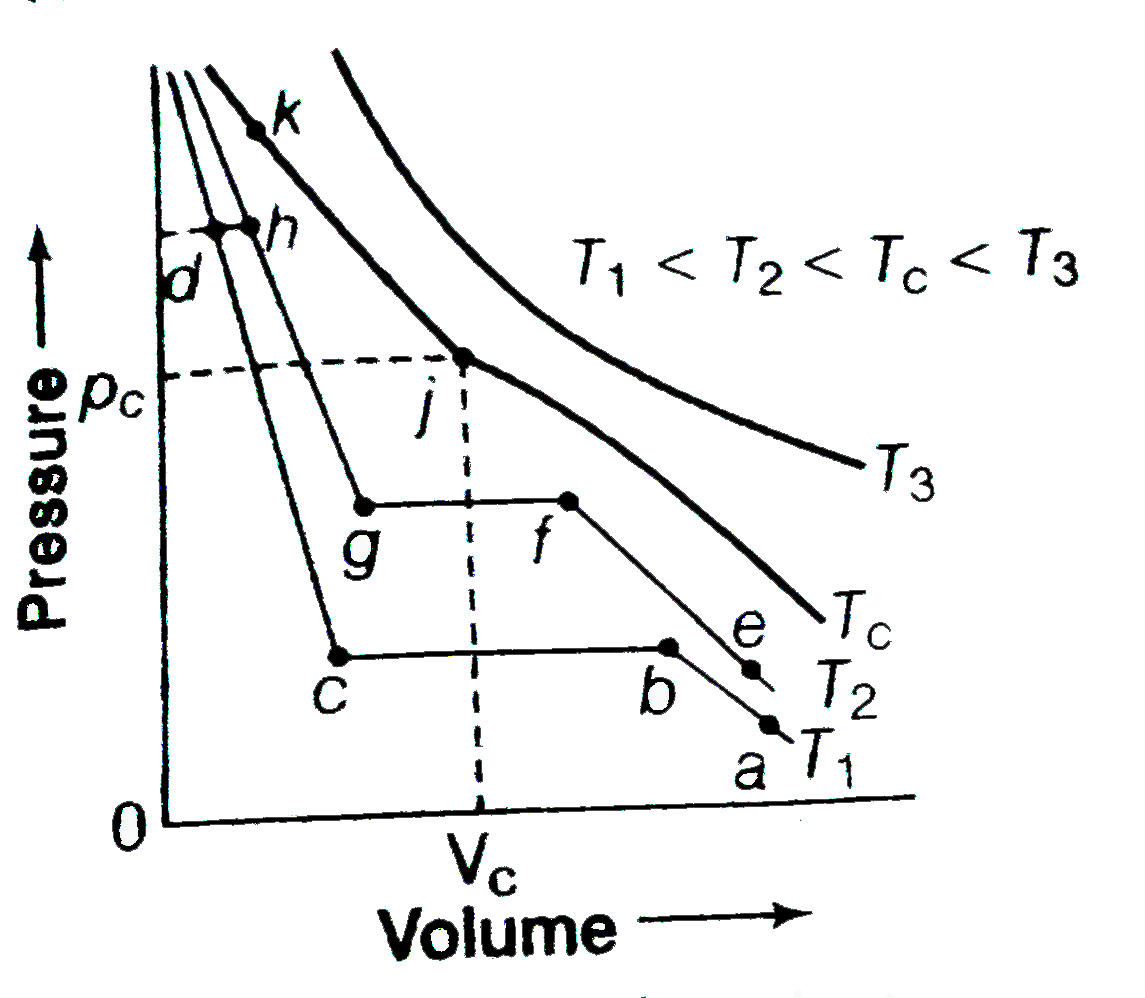
(i) In which state will CO2 exist between the points a and b at temperature T1 ?
(ii) At what point will CO2 start liquefyinh when temperature is T1 ?
(iii) At what point will CO2 be completely liquefued when temperature is T2 ?
(iv) Will condensation take place when the temperature is T3 ?
(v) What portion of the isotherm at T1 represent liquid and gaseous CO2 at equilibrium ?View SolutionQuestion 276
At room temperature, the following reaction proceeds nearly to completion:
2NO+O2→2NO2→N2O4
The dimer, N2O4, solidfies at 262K. A 250mL flask and a 100mL flask are separated by a stopcock. At 300K, the nitric oxide in the larger flask exerts a pressure of 1.053atm and the smaller one contains oxygen at 0.789atm. The gase are mixed by opening the stopcock and after the end of the reaction the flasks are cooled to 220K. Neglecting the vapour pressure of the dimer, find out the pressure and composition of the gas remaining at 220K. (Assume the gases to behave ideally)View SolutionQuestion 277
At 27∘C, hydrogen is leaked through a tiny hole into a vessel for 20min. Another unknown gas at the same temperature and pressure as that of hydrogen is leaked through the same hole for 20min. After the effusion of the gases, the mixture exerts a pressure of 6atm. The hydrogen content of the mixture is 0.7mol. If the volume of the container is 3L, what is the molecular weight of the unknown gas?View SolutionQuestion 278
A gas bulb of 1L capacity contains 2.0×1011 molecules of nitrogen exerting a pressure of 7.57×103Nm−2. Calculate the root mean square (rms) speed and the temperature of the gas molecules. If the ratio of the most probable speed to the root mean square is 0.82, calculate the most probable speed for these molecules at this temperature.View SolutionQuestion 282
The composition of the equilibrium mixture (Cl2 2Cl) , which is attained at 1200∘C, is determined by measuring the rate of effusion through a pin hole. It is observed that a 1.80mmHg pressure, the mixture effuses 1.16× as fact as krypton effuses under the same conditions. Calculate the fraction of chlorine molecules dissociated into atoms (atomic weight of Kr is 84).View Solution
2Cl) , which is attained at 1200∘C, is determined by measuring the rate of effusion through a pin hole. It is observed that a 1.80mmHg pressure, the mixture effuses 1.16× as fact as krypton effuses under the same conditions. Calculate the fraction of chlorine molecules dissociated into atoms (atomic weight of Kr is 84).View SolutionQuestion 319
An air bubble has a radius of 0.50 cm at the bottom of a water tank where the temperature is 280 K and the pressure is 280 kPa. When the bubble rises to the surface, the temperature changes to 300 K and pressure to 300 K and pressure to 100 kPa. Calculate the radius of the bubble at the surfaceView SolutionQuestion 320
A gas cylinder having a volume of 25.0 L contains a mixtue of butane CH3(CH2)2CH3 and isobutane (CH3)3CH in the ratio of 3 : 1 by moles. If the pressure inside the cylinder is 6.78×106 pa and the temperature is 298 K, calculate the number of molecular of each gas assuming ideal gas behaviour. (1 atm = 101325 Pa)View SolutionQuestion 325
A large flask fitted with a stopcock is evacuated and weighted. Its mass is found to be 134.567 g. The volume of the flask was 500ml. It is then filled at a pressure of 735 mm and 131∘C with a gas of unknown molecular mass and then reweighed. Its mass is 137.456 g. Assuming that the gas is ideal, calculate the molar mass of the gas.View SolutionQuestion 331
A cylinder containing nitrogen gas and some liquid water at a temperature of 25∘C. The total pressure in the cylinder is 600 mm. The piston is moved into the cylinder till the volume is halved keeping the temperature constant. If the aqueous tension at 25∘C is 23.8 mm, calculate the final total pressure in the cylinder.View SolutionQuestion 337
At room temperature, ammonia gas at 1atm pressure and hydrogen chloride gas at Patm pressure are allowed to effuse through identical pin holes from opposite ends of a glass tube of 1m length and of uniform cross- section. Ammonium chloride is first formed at a distance of 60cm from the end through which HCl gas is sent in. What is the value of P?View Solution
All Exercises from CENGAGE CHEMISTRY (ENGLISH) Class 11 CHEMISTRY STATES OF MATTER
- ARCHIVES ( ASSERTION-REASONING)
- ARCHIVES (INTEGER)
- ARCHIVES (MULTIPLE CORRECT)
- ARCHIVES (SINGLE CORRECT)
- ARCHIVES (SUBJECTIVE)
- CONCEPT APPLICATION 5.3
- EX 5.1
- EX 5.2
- EX 5.3
- EX 5.4
- EXERCISES
- EXERCISES (ASSERTION-REASONING)
- EXERCISES (FILL IN THE BLANKS)
- EXERCISES (INTEGER)
- EXERCISES (LINKED COMPREHENSIVE)
- EXERCISES (MULTIPLE CORRECTTYPE)
- EXERCISES (SINGLE CORRECT)
- EXERCISES (TURE FALSE)
- LINKED COMPREHENSIVE
- ILLUSTRATION
- SOLVED EXAMPLE

